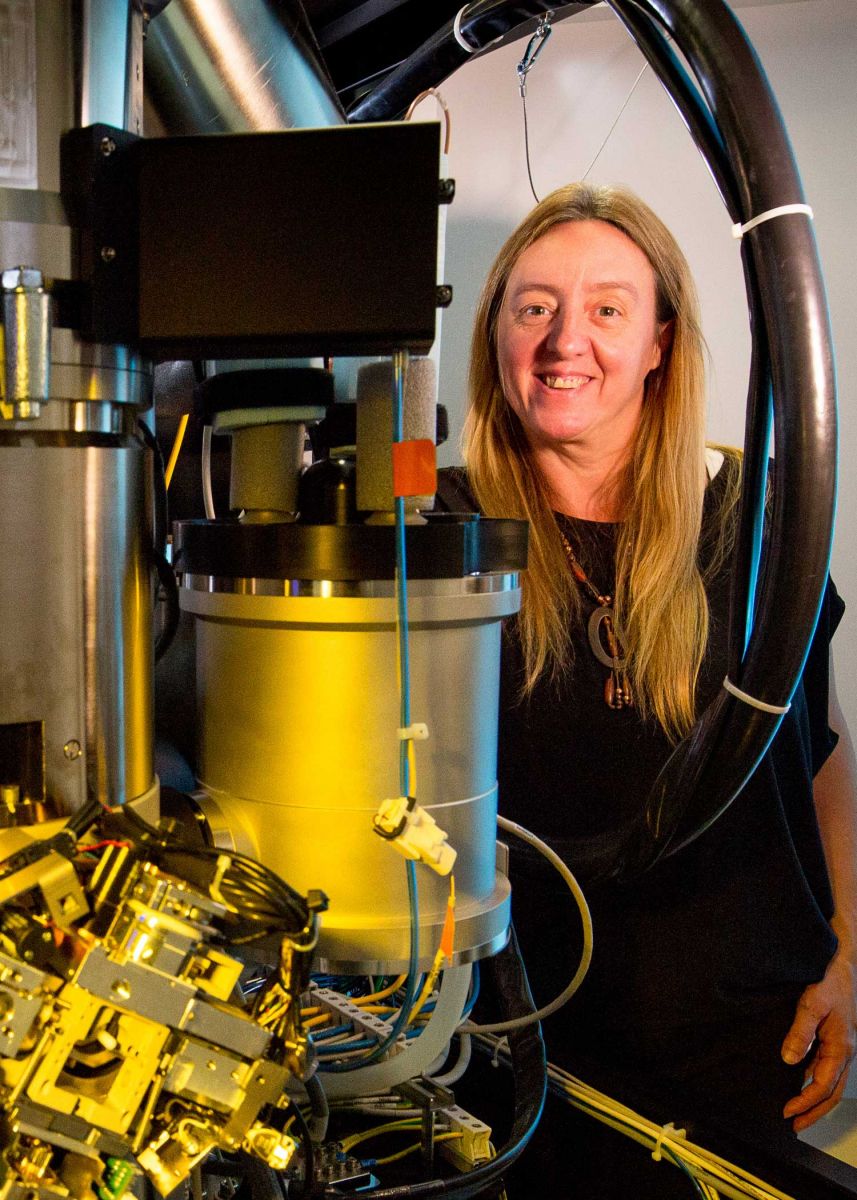
Research
My research program aims at understanding of how molecular machines function in order to apply this knowledge to improve public health. The biological systems are important therapeutic targets for the treatment of cancer, neurodegenerative (Inclusion Body Myopathy- IBMPFD and Amyotrophic Lateral Sclerosis (ALS) and infectious diseases (through vaccine development and understanding the pumps involved in antibiotics resistance). Using structural biology and cryo-EM, we determine the 3D structure of macromolecular complexes in different conformations. Each 3D structure is the equivalent of a snapshot or a still-frame of a movie, which when placed together comes to life. Our approach allows us to obtain movies of the small molecular machines that allow cells to functions, bacteria and viruses to infect and cause diseases. Understanding and visualizing these machines in action allow determining novel therapeutic strategies.
My lab is a structural biology lab. We study how macromolecular machines function. Our preferred approaches are single particle cryo-EM and cryo-electron tomography. Our studies include:
- The AAA ATPase p97 activity in health and disease: p97 is an essential protein for cell homeostasis that plays a major role in a multiple of cellular functions, including membrane. Our studies aim at understanding how p97 perform its functions at the molecular level and characterise how it can be targeted for the treatment of cancer and multisystem proteinopathy (e.g. Inclusion Body Myopathy with early-onset Paget disease and Frontotemporal Dementia- IBMPFD and Amyotrophic Lateral Sclerosis-ALS).
- Membrane transporters: We are studying the molecular mechanism that drive transport of proteins and ions across membranes. The systems we are studying include Anthrax toxins, ABC transporters (e.g. the MalFGK2 transporter), RND transporters (e.g. the mycolic acid transporter from Mycobacterium tuberculosis) and ion transporters (e.g. the ExbB-ExbD-TonB system of gram-negative bacteria and the mechanosensitive ion channel TACAN.
- Viral glycoproteins (e.g. Influenza Hemagglutinin) involved in host pathogen interactions. We are interested in the structural implication these proteins for vaccine development and immune response.
Techniques
- Single particle cryo-EM and cryo-electron tomography.
Used equipment in the Facility for Electron Microscopy Research at McGill University in 2017: https://www.mcgill.ca/femr/
Will use EM facility in Bio21 in 2018:
http://www.bio21.unimelb.edu.au/advanced-microscopy.
- Classical EM (resin, immunogold…).
- Classic biochemical approaches.
Group Members
Group Leader
Assoc/Prof Isabelle Rouiller
Postdoctoral Fellows
Mohsen Kazemi
Sudipta Bhattacharyya
PhD Students
Sepideh Valimehr
Nazanin Mohebahi
Roopa Das
Martin Fleming
George Kobakhidze
 Biography
Biography
Isabelle Rouiller trained as an Engineer in Biochemistry (INSA Lyon, France). She obtained a DEA (master equivalent) from INSA/ Université Claude Bernard Lyon on the study of mitochondria. She obtained a PhD in Virology/Cell Biology from the University of Hertfordshire (UK) in 1998 for research conducted at the Institute for Animal Health, Pirbright laboratories on the “Assembly of African Swine Fever Virus”. She undertook 2 postdoctoral posts at the Scripps Research Institute and at the Burnham Institute (San Diego, California, USA). She joined McGill University in 2007 first as an Assistant Professor and was later promoted to tenured Assistant Professor. In November 2017, she moved with her lab to the Bio21 Institute at the University of Melbourne as Associate Professor in the Department of Biochemistry and Molecular Biology.
Her research program is on structure-function studies of macromolecular complexes using cryo-EM with a focus on the function of ATPases (e.g. the AAA ATPase p97), membrane proteins involved in transport across membranes (e.g. anthrax toxins, ion channels, RND transporters) and viral glycoproteins involved in fusion (e.g influenza hemagglutinin). Her overall career objective is apply structural knowledge and her findings on how molecular machines function to improve public health.

 Biography
Biography
